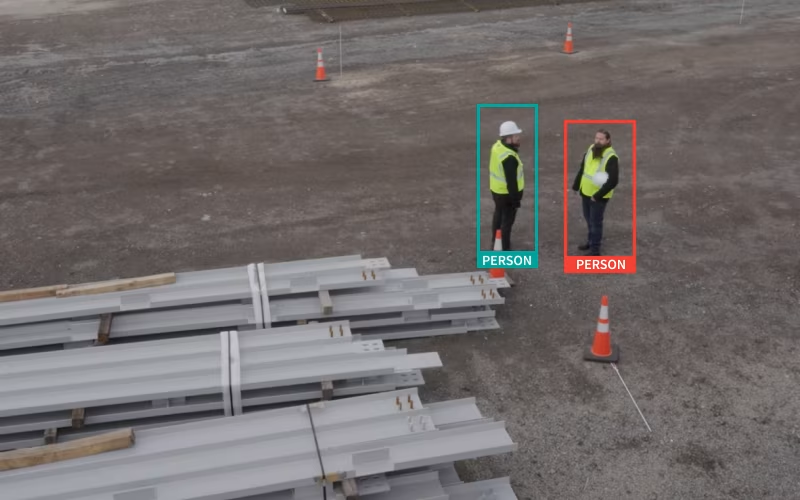Best Practices for Campus Safety and Security Measures

Comprehensive campus safety plans integrate advanced technology, physical security, emergency preparedness, and proactive strategies to protect students and faculty.
In the opening paragraph of A Tale of Two Cities, Charles Dickens famously sets the scene by writing, “It was the best of times, it was the worst of times.” While that line starts to unravel a story centered around the events of the French Revolution, he might as well have been describing today’s college student experience. There is no doubt that attending college fosters an optimism for the future highlighted by an environment to freely learn, explore, and find oneself. However, it is often met by equally stressful and competing tensions. Overwhelming uncertainty about what comes next, combined with the pressures of juggling classes, navigating new social situations, adapting to life away from home, and worrying about personal safety, are ever-present.
School shooting headlines remind us that the fear is real and that institutions for learning are not immune to violence and crime. According to a recent analysis by SafeHome.org, 86 percent of schools experienced violent crime on campus, with almost 10,000 incidents reported on campuses nationwide in 2022. When it comes to non-violent property crimes, such as burglary and motor vehicle theft, the reported numbers in four-year institutions were almost identical to the violent incidents. And to make matters worse, one in ten students are victims of sexual assault.
While institutions of higher learning come in all different sizes and exist in various geographic landscapes—from urban metropolises to less populated rural areas—the challenge of keeping students and faculty safe is a universal concern.
The responsibility to keep students safe doesn’t just begin and end when they are in class. It’s a non-stop endeavor—one that extends to when they are in their dorms, at social gatherings, and even when they are in transit. Due to the sprawling nature of campuses and buildings, it can be a serious challenge.
Below are some best practices to enhance campus safety.
5 Best Practices for Campus Safety
1. Increase Visibility
When it comes to crime deterrence in any environment, visibility and proper lighting are paramount to staving off crime. The ability to see your whereabouts clearly so as not to be caught by surprise goes a long way in making sure one doesn’t become a victim. Good visibility also curtails suspicious behavior and allows campus security to quickly and easily identify potential problems.
Campuses can do their part by making sure that shrubs are well manicured and grounds are maintained to eliminate hiding spots and optimize visibility. Making sure areas like parking areas, walkways, and landings are well lit and that lightbulbs and fixtures are in good working order further promotes safety in these spaces.
2. Implementing Security Technologies
Central to any good security plan is having a comprehensive surveillance system in place. The more camera coverage you have the better positioned you are to prevent crime and respond to emergencies.
Today’s cameras with their advanced technologies can be a solution to many security challenges. Their ability to capture images in low-light situations can mitigate dark, hard-to-see areas around campus. Surveillance cameras can help secure perimeters and keep track of and identify those who enter and exit areas of concern such as dormitories and parking garages. Features such as remote monitoring, motion detection, and advances in artificial intelligence ensure that areas are under constant protection.
Surveillance cameras can be integrated with other security technologies to create a robust campus security ecosystem. Cameras can trigger lights and audible alarms or announcements. These can serve as a deterrent, warning, or means to provide instructions or updates to the community. They can also provide a direct line to not only campus security but local authorities as well, which can expedite response times and help direct them to the exact locations of those distressed.
3. Enhancing Physical Security
A comprehensive campus security plan should involve a physical security presence. Regular security patrols by foot or vehicle provide not only a deterrent but also an active presence that can intercept and intercede potential crimes and conflicts as they arise.
A physical security presence not only exudes a sense of safety but also gives the campus community a resource or reassuring figure if they need to seek help.
Physical security is not only limited to campus police or security guards. Many campuses actively organize walking programs to escort students who are uncomfortable walking alone or during late hours. These programs function as a “buddy system,” pairing students with an escort who is connected via walkie-talkie or another reliable communication method, ensuring their location is actively monitored for safety.
Many campuses have also installed blue emergency phones, strategically placed throughout the campus and easily recognizable by their blue lights. These phones provide students with a direct and immediate connection to security or emergency services if they are in danger or need assistance.
4. Emergency Training and Preparedness
Nowadays, every school and campus should have a comprehensive emergency plan in place to meet various threats. These plans should cover everything from fire evacuations to active school shootings and other potential threats. Not only should a plan be in place but there should be frequent drills and training so that everyone can understand and familiarize themselves with the proper protocols.
Additionally, campuses should consider employing a mass notification system so that members of the community can be alerted and updated during emergency situations. This can be in the form of audible alarms, instructions on loudspeakers, or a mass alert texting system.
Additionally, staff and security teams should be trained to identify early warning signs of potential threats. Recognizing behavioral red flags or noting inconsistent activity can help prevent larger problems. The ability to notice, assess, intercede, and address situations effectively is essential to maintaining a safe campus community.
5. Conducting Risk Assessments
Regular risk assessments are vital to identifying vulnerabilities in a school’s overall security plan. The assessments should be all-encompassing and realistic so that security protocols are actively tested, and weaknesses become exposed. Only then can these areas be addressed and strengthened to create an improved protocol. By conducting regular assessments, you ensure your security plan is constantly evolving to meet the challenges of the times and remains current with potential threats.
For students and parents alike, college represents an exciting milestone that comes with some apprehension and worry. For students, it may be their first experience of independence, while parents may grapple with constant worries about their child’s well-being. Recognizing these feelings, many schools have adopted a comprehensive approach to addressing them. LVT’s education surveillance systems have been at the forefront of these efforts.
Our advanced security camera units play a vital role in enhancing campus safety by providing high-quality video surveillance that can be integrated with access control systems and real-time data analysis. The cutting-edge cameras can be strategically placed throughout the campus to monitor activities, deter potential criminal behavior, and assist law enforcement in investigating incidents.
By leveraging LVT’s technology, universities can ensure a proactive approach to safety, allowing students and faculty to focus on their academic pursuits with greater peace of mind.
Reach out to LVT to see how we may be part of your comprehensive campus security solution.



